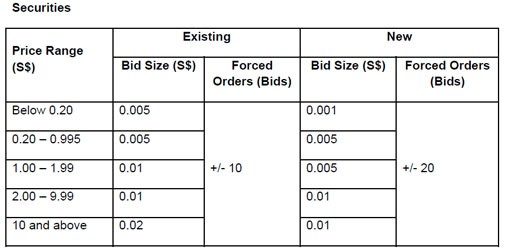Bid and Ask PriceSize
Post on: 31 Август, 2015 No Comment

What is a Bid Ask Spread?
Never heard of Bid and Ask price & size or a Bid Ask spread? That’s alright, most newbie traders and probably a whole lot of seasoned investors haven’t heard about them either. Many investors only know about the Last Price, and maybe the High/Low price that are displayed for a stock on their basic chart programs and quotes or in their newspapers.
And that’s all that’s really necessary for an investor to know, since they don’t trade with the frequency of day traders.
But a trader, especially a day trader needs to be familiar with Bid and Ask terminology, because it can greatly affect his or her performance. Slippage can really eat into your profits or even cause a loss. I’ll explain that in a moment. This topic can be somewhat confusing, but it’s my intention here to keep this article as simple as possible, so know one walks away flustered.
What is Bid and Ask Price — Size?
The best Bid Price is simply the highest price at that very moment, that buyers (traders, market makers, investors, dealers) are willing to purchase a stock’s shares. The Bid Size is the number of shares that those buyers are willing to purchase at that Bid Price. The best Ask Price is the lowest price at that same moment, that sellers are willing sell a stock’s shares. The Ask Size is the number of shares that those sellers are willing to sell at that Ask Price.
On trading platforms you will generally be offered two types of real-time quotes — Level 1 and Level 2. Level 1 simply allows you to see a stock’s best Bid/Ask price and size along with the last sale. Level 2 allows you to see many different levels of Bid/Ask prices and their corresponding size. On high volume stocks, these numbers are changing constantly.
Examples of Bid vs Ask Price — Size
What we’re going to do here is, go through some basic examples of what happens every day in the markets, from a Bid and Ask perspective when traders or investors buy and sell stocks.
In Example 1 below, a trader wants to buy 2000 shares of a stock. At the exact moment she clicks the buy button, there is a Bid Price of 25.00 and Bid Size of 1000 on her screen. There is also an Ask Price of 25.01 and Ask Size of 2500. This means the total number of shares available to her from all sellers at that moment, at the price level 25.01 was 2500.
Since her trade order was a market order, her trade executes instantly and takes 2000 of those available shares. If everything else remained exactly the same, she would then see on her screen 500 shares remaining at the Ask Price 25.01. On her position screen she would see that she is now Long 2000 shares @ 25.01.
That’s pretty straight forward, right? Lets look at a slightly more complicated situation next with Example 2.
Same best Bid and Ask prices as the last example and she still wants to buy 2000 shares, but this time there’s only 1000 shares available at the Ask Price 25.01. What happens when she places the same market buy order for 2000 shares?
This time since there’s not enough shares available at the inside Ask at 25.01, her market order buys the available 500 shares at 25.02 and 500 more shares at the 25.03 price level. So she ended up with 1000 @25.01, 500 @25.02 and 500 @25.03. Her trading platform will tell her she’s Long 2000 shares and show her the average price of her shares.
What you’re learning here is. you don’t always buy or sell shares of a stock for a single price. You often must go up Ask Price levels to buy and down Bid Price levels to sell. This has much to do with the liquidity of a stock.
In other words, the size present at each Bid-Ask price level compared to a trader’s order size. The larger your trades get the more you’ll have to pay attention to liquidity and volume of individual stocks.
What is a Bid Ask Spread?
The best way to explain a Bid Ask Spread is to pull up another example. In Example 3 below, a trader wants to buy 500 shares of a stock. The current inside, best Bid and Ask Prices are 57.30 and 57.40, respectively.
This stock happens to be a low volume, illiquid stock. The Bid Ask Spread, therefore is 10 cents, just the difference between the inside or best Bid and Ask Prices.
Definitely not the kind of stock you’d want to trade on an active basis. At least not with market orders. So what happens to our trader when he hits the buy button with a market order?
He’s going to experience some price slippage all the way up to 57.45 for those last 300 shares, since his order is for 500 shares and there’s only 200 at 57.40.
It’s bad enough to pay a Bid Ask Spread of 10 cents, but then slippage of another 5 cents per share hurts. Imagine trading a few thousand shares with market orders on a stock like this. And don’t forget, if you experience that kind of spread and slippage on the buy side, the same can happen on the sell side of a day trade.
So how do you deal with this issue? The best day trading stocks or ETFs are the ones that have above average volume, liquidity and a decent trading range. For example, the Bid Ask Spread for the highly liquid ETFs, QQQ and SPY are usually only a penny or two. Another good source of liquid stocks with relatively tight spreads is the S&P 500.














